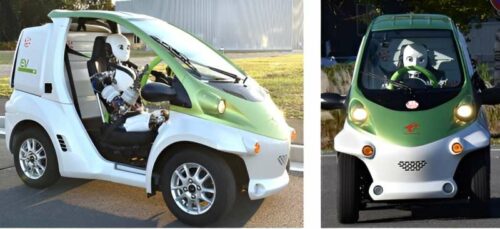This “musculoskeletal humanoid” robot, equipped with high-resolution cameras and advanced control software, has been tested on a real-world track, showing promising results with the goal of determining if it can drive more efficiently and safely than humans, potentially transforming the future of autonomous transportation.

Most self-driving car projects focus on making the car itself autonomous, adding various sensors and processing power. These efforts have had mixed results. A team of roboticists at the University of Tokyo has developed a new approach to autonomous driving by placing a robot in the driver’s seat. Instead of automating the entire car, the researchers built a robot capable of driving a car and tested it on a real-world track. The team explored whether building a robot to drive a standard vehicle might be easier and cheaper. They created a robot named Musashi and tested it on a track at the University of Tokyo’s Kashiwa Campus.

Musashi is designed to operate like a human driver. The researchers created a “musculoskeletal humanoid” with two arms, two legs, feet, hands, a torso, neck, and head. The robot has movable eyes equipped with high-resolution cameras, jointed arms with hands having five digits, and feet designed for precise control of the gas pedal and brake. Musashi’s computer includes software for training and operational control. After building Musashi, the team placed it in a small electric car for test driving. The robot was evaluated on its ability to recognize and respond to objects in its path, including humans. The initial tests showed promising results, although Musashi is not yet ready to drive on public roads.
The researchers plan to continue their work by enhancing it’s driving capabilities, focusing on navigating complex scenarios, improving decision-making, and increasing responsiveness to dynamic conditions. Through further tests and experiments, they aim to optimize the robot’s performance and reliability, exploring its ability to handle heavy traffic, adverse weather, and unexpected obstacles. They also intend to integrate advanced machine learning algorithms to enable continuous improvement. The team aims to determine if it can drive more efficiently and safely than humans, involving rigorous safety testing. By gathering extensive data, they hope to identify the advantages and limitations of robotic drivers, potentially reducing human error and enhancing road safety. They envision it being used in public transit, delivery services, and personal vehicles, leading to advancements in autonomous driving technology and safer, more efficient roadways






